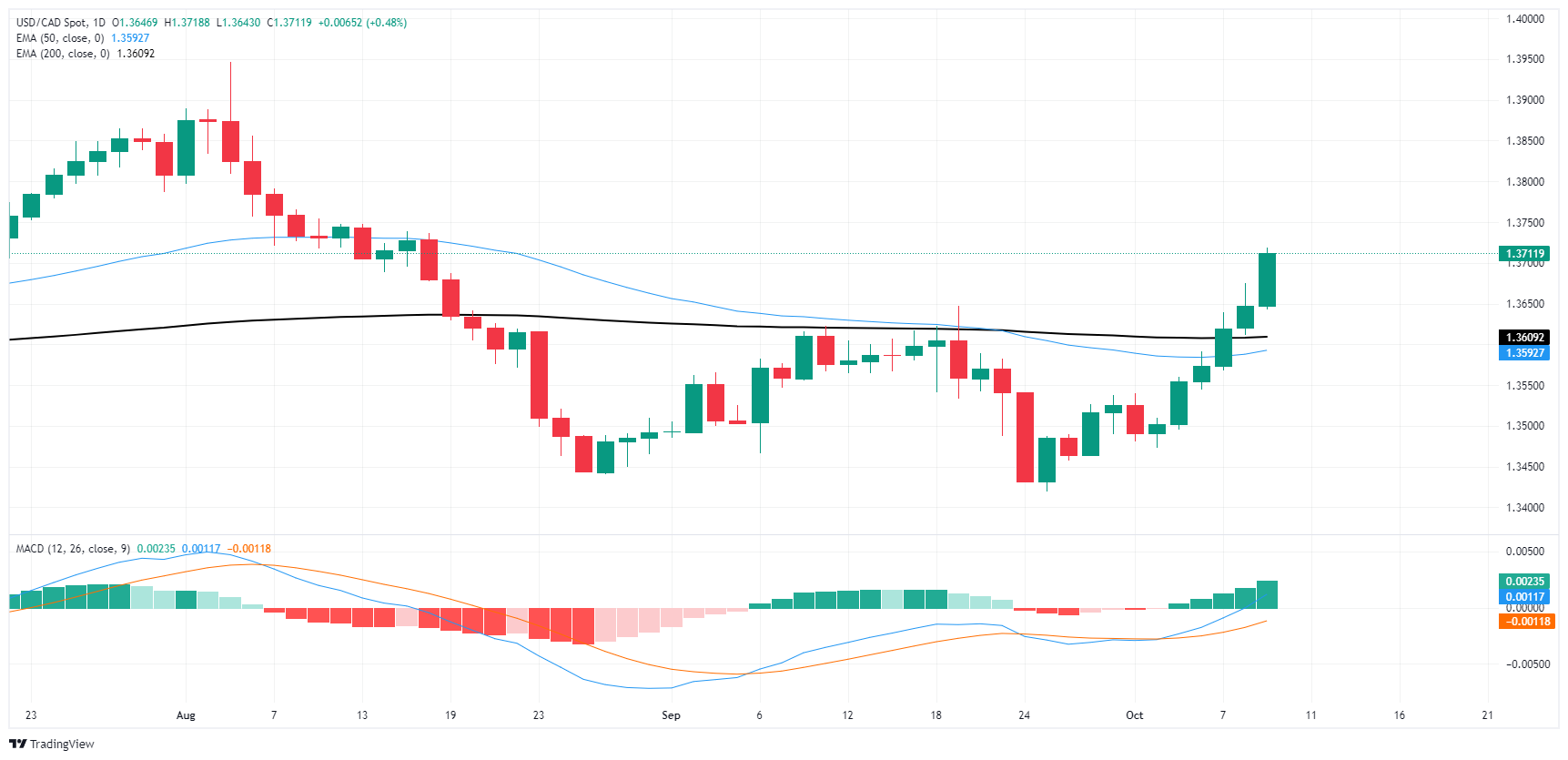Canadian Dollar tumbles for sixth straight day
- The Canadian Dollar fell further on Wednesday, shedding another half of a percent.
- Canada remains hamstrung on the economic calendar until Friday’s labor print.
- Analysts expect another 50 bps rate cut from the BoC.
The Canadian Dollar (CAD) backslid again on Wednesday, shedding another percent against the Greenback. The US Dollar continues to gain ground across the board, with a notable lack of broad-market CAD bullishness sending the Loonie into multi-week lows.
Canada remains largely absent from the economic calendar for most of this week, leaving what few CAD traders remain at the table to sit and wait for Friday’s Canadian labor update. Global financial markets continue to hinge their outlook entirely on central bank action, and the Bank of Canada (BoC) is widely expected to undermine the Canadian Dollar once more with another outsized rate cut believed to be in the pipe.
Daily digest market movers
- The CAD has declined for all but two of the last ten consecutive trading days, falling two and a quarter percent against the Greenback.
- USD/CAD has risen to its highest bids since mid-August after rallying from a 33-week low near 1.3400.
- Canadian labor figures slated for Friday are expected to show a still-sluggish pace of job creation in September, forecast to come in at only 27K compared to the previous month’s 22.1K.
- The Canadian Unemployment Rate is also expected to tick up in September to 6.7% from 6.6%.
- According to some Canadian banking analysts, the BoC is expected to deliver another rate cut for 50 bps on October 23rd.
Canadian Dollar price forecast
USD/CAD has been in a clear bullish uptrend since mid-September, piercing several major technical levels, including the 200-day Exponential Moving Average (EMA) at the 1.3600 handle. With such a one-sided bullish pattern baked into daily candlesticks, price action traders may be looking for a retracement below 1.3650 before loading up on further USD/CAD long positions to push the pair into another leg higher.
USD/CAD daily chart
Canadian Dollar FAQs
The key factors driving the Canadian Dollar (CAD) are the level of interest rates set by the Bank of Canada (BoC), the price of Oil, Canada’s largest export, the health of its economy, inflation and the Trade Balance, which is the difference between the value of Canada’s exports versus its imports. Other factors include market sentiment – whether investors are taking on more risky assets (risk-on) or seeking safe-havens (risk-off) – with risk-on being CAD-positive. As its largest trading partner, the health of the US economy is also a key factor influencing the Canadian Dollar.
The Bank of Canada (BoC) has a significant influence on the Canadian Dollar by setting the level of interest rates that banks can lend to one another. This influences the level of interest rates for everyone. The main goal of the BoC is to maintain inflation at 1-3% by adjusting interest rates up or down. Relatively higher interest rates tend to be positive for the CAD. The Bank of Canada can also use quantitative easing and tightening to influence credit conditions, with the former CAD-negative and the latter CAD-positive.
The price of Oil is a key factor impacting the value of the Canadian Dollar. Petroleum is Canada’s biggest export, so Oil price tends to have an immediate impact on the CAD value. Generally, if Oil price rises CAD also goes up, as aggregate demand for the currency increases. The opposite is the case if the price of Oil falls. Higher Oil prices also tend to result in a greater likelihood of a positive Trade Balance, which is also supportive of the CAD.
While inflation had always traditionally been thought of as a negative factor for a currency since it lowers the value of money, the opposite has actually been the case in modern times with the relaxation of cross-border capital controls. Higher inflation tends to lead central banks to put up interest rates which attracts more capital inflows from global investors seeking a lucrative place to keep their money. This increases demand for the local currency, which in Canada’s case is the Canadian Dollar.
Macroeconomic data releases gauge the health of the economy and can have an impact on the Canadian Dollar. Indicators such as GDP, Manufacturing and Services PMIs, employment, and consumer sentiment surveys can all influence the direction of the CAD. A strong economy is good for the Canadian Dollar. Not only does it attract more foreign investment but it may encourage the Bank of Canada to put up interest rates, leading to a stronger currency. If economic data is weak, however, the CAD is likely to fall.

